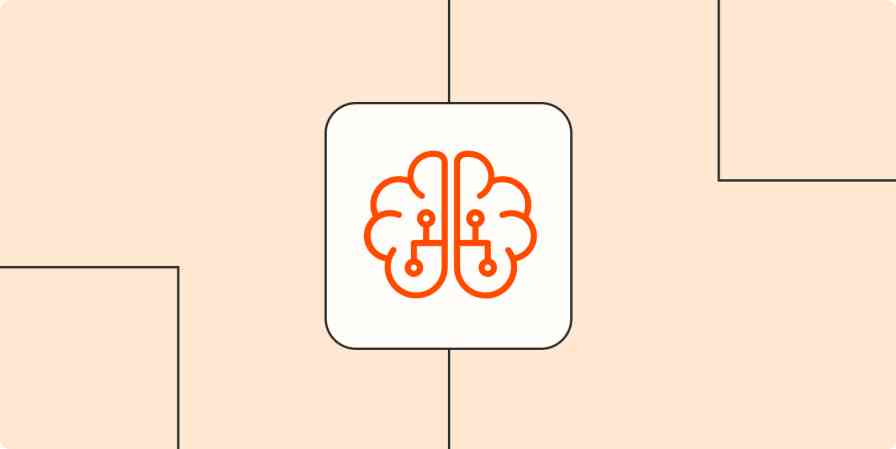There's a lot of advice out there about the connection between timing and productivity: articles—including our own—suggesting "X things to do in the morning/afternoon/evening" to stay productive all day long.
And yes, when you work on certain types of tasks absolutely impacts your productivity. But timing isn't a one-size-fits-all approach. Why? Because we each have a unique chronotype: an internal clock that governs our focus, creativity, and mood over the course of the day.
To figure out when you should be working on each thing you want to accomplish, you need to identify your chronotype. Once you understand your chronotype—and start using that understanding to schedule your daily tasks—your productivity will get the boost it needs.
What is a Chronotype?
Chronotype is the scientific term for what we commonly refer to as an internal clock. And while we generally talk about our internal clocks in terms of our natural inclination to fall asleep and wake up at certain hours of the day, chronotypes govern much more than just our sleep cycle.
Your personal chronotype impacts what time of day you're the most focused, most creative, most likely to make a mistake, most likely to be in a good—or bad—mood, and much more.
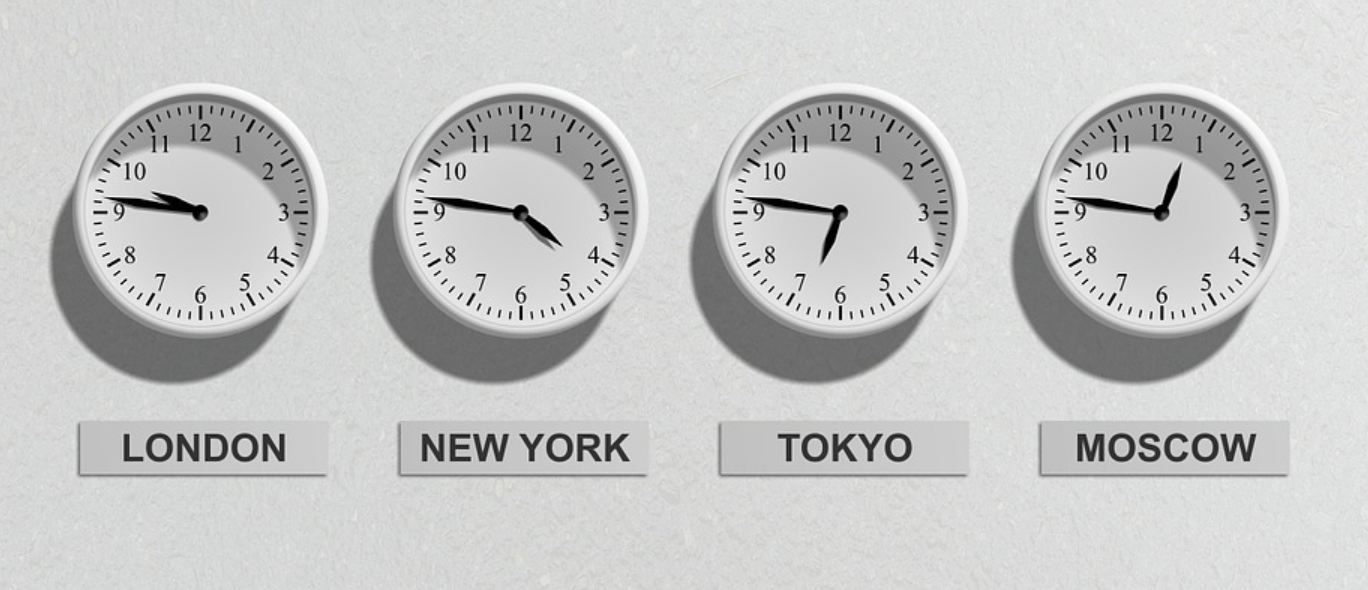
If you work in an office, you can probably tell that most people start to get tired and distracted in the early- to mid-afternoon—like clockwork. You might chalk it up to a post-lunch slump, but whatever the cause, most of us can't afford to lose three hours a day to low energy levels and wandering minds.
To better understand the concept of a chronotype and its impact on day-to-day (or, rather, hour-to-hour) productivity, we'll turn to Daniel H. Pink's book When: The Scientific Secrets of Perfect Timing. In it, he reviews the scientific research that proves the phrase "timing is everything" isn't just a cliché. According to Pink (and the hundreds of scientific studies he relied on to write the book), everyone—people of all ages, genders, and races, and across all geographic locations and time zones—experiences three productivity phases over the course of every day:
Peak
Trough
Rebound
For most people, it looks like this:
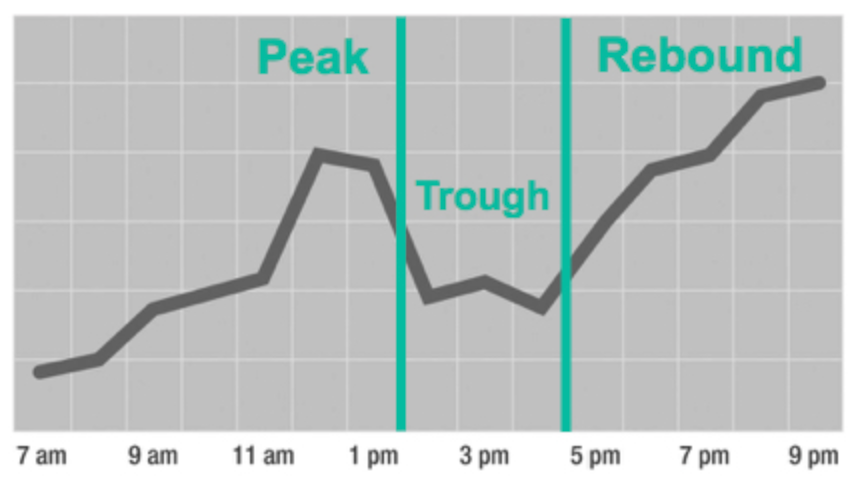
Just between lunch and the end of the workday is the trough—our lowest point of the day, aside from the moments after we wake up.
So if you start start feeling less energetic and focused every day after lunch, it's natural. But what does it mean for your productivity? Does it just mean you should give up on getting work done for those three hours and resign yourself to accomplishing all tasks in the morning?
Not necessarily.
A Time to Every Purpose
During the hours leading up to and at our peak, we're the most focused, the least easily distracted, and thinking the most clearly. That makes it a perfect time for analytical tasks.
But that doesn't mean the trough is a complete loss. It's actually better for creative tasks. According to Pink, creativity thrives when we're more easily distracted because distractions actually help us make connections we might not have made if we were highly focused.
This means that it's possible to stay productive all day long—even during the trough—if you just schedule time to complete the right tasks during the right chunk of the day:
Before and during your peak, work on analytical tasks.
During your trough, work on creative tasks.
Here's an example from my own work. My job consists of four main tasks:
Ideating: Coming up with ideas for things to write is easily the most creative task I'm responsible for. The exercise starts with "Um…" and ends with a pitch for a piece I'm excited to write and not embarrassed to send to my editors.
Researching: Everything I write requires some form of research. Sometimes, it's just SEO research. Other times, it's reading a book or playing with dozens of apps to find the best one. Researching requires a lot of focus, so I consider it a more analytical task.
Outlining: Sometimes I just start writing, but more often I start with an outline. Creating an outline is a creative task. I have to determine exactly what I want to write about, and in what order it makes the most sense to present the information.
Writing: While we tend to think of writing as a creative task—and maybe it would be if I were writing poems or a novel—the type of writing I do is much more analytical. I usually already have an outline, so writing is a simple matter of staying focused and getting words on the page.
Now that I understand my chronotype and have determined what types of tasks I'm responsible for, I can use that information to create a daily schedule that amplifies my productivity. I need to work on my analytical tasks (researching and writing) in the mornings, when I'm at my peak. Then during my afternoon trough, I should focus on my creative tasks (outlining and ideating).
If you start scheduling your work according to your chronotype, you'll be more productive—and likely happier because of it.
Types of Chronotype
The first step in creating your personalized productivity schedule is determining your chronotype. This step is crucial because while most people follow the rhythm I've described so far—peak in the morning, trough in the afternoon, rebound in the evening—not everyone does.
According to Pink, there are three different types of chronotype: lark, third-bird, and owl:
Larks are what we would consider morning people. On their own accord—and not even because of work—they get out of bed before 7 a.m.
Third-birds are the most common chronotype. Third-birds are naturally inclined to wake up between 8 a.m. and 10 a.m.
Owls are night people. On days when they don't have to get up for work or some other obligation, they don't get out of bed until after 10 a.m.
Here's why it's important to understand your chronotype: While larks and third-birds experience the day in a peak, trough, and recovery, night owls experience the day in reverse: recovery, trough, and peak. So if you're an owl, you're most focused—and thus most able to complete analytical tasks—in the evening.
Find your chronotype
Pink offers a few suggestions for finding your chronotype.
Suggestion 1
The simplest way is to answer three questions. When work or other obligations don't force you to go to bed or wake up at a specific time—when your schedule is entirely up to you:
What time do you usually go to bed?
What time do you usually wake up?
What is the midpoint between those two times?
For example, if you normally go to bed at 2 a.m. and wake up at 10 a.m., your midpoint is 6 a.m.
Next, find your midpoint time on this chart to determine your chronotype:
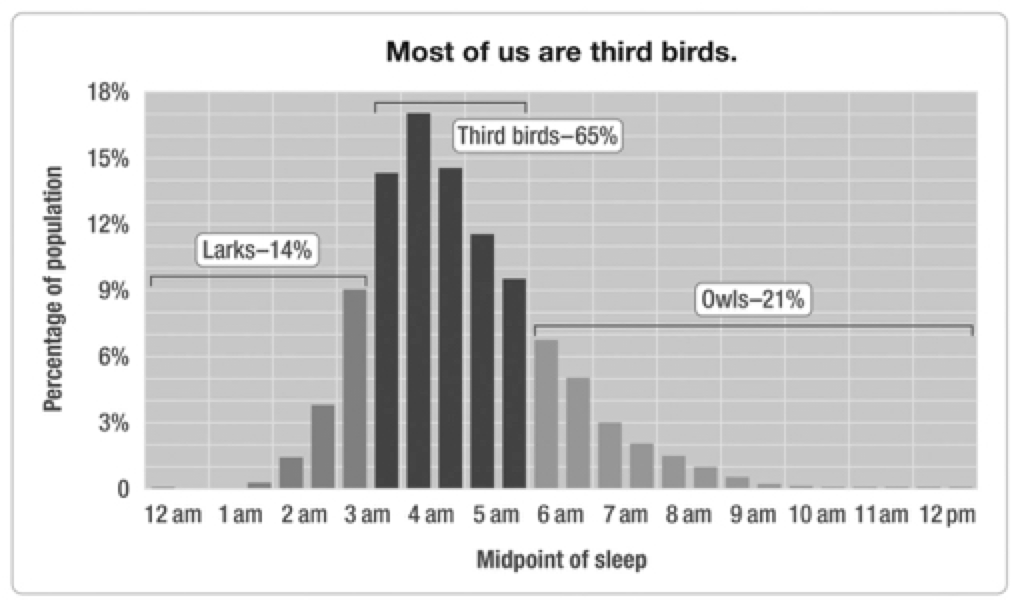
If you feel confident with that method, great. I was a little skeptical, though, because when I go to bed and get up on the weekends is really inconsistent. Sometimes, I go to bed at 11 p.m. and wake up at 7 a.m. Other times, I'm up until 5 a.m. and don't drag myself out of bed until noon.
If you're not confident with your results, there are a couple of other ways to find your chronotype.
Suggestion 2
One option is to take the Automated Morningness-Eveningness Questionnaire (Auto-MEQ).
Then, use this scale to convert your Auto-MEQ scores to lark, third-bird, and owl:
If you score between 70-86, you're a lark.
If you score between 31-69, you're a third-bird.
If you score between 16-30, you're an owl.
Suggestion 3
But if you want to be absolutely certain—and you want to identify at exactly what time you're most focused every day—spend a week filling out this Daily When Tracker created by Pink. Set an alarm to go off every 90 minutes while you're awake, then fill out the appropriate line.
At the end of the week, you should see trends in when you're feeling the most and least alert. Use that to determine how your internal clock ebbs and flows over the course of the day.
Related: If you're familiar with The Power of When by Michael Breus, you may think of chronotypes in Breus' categories: dolphin, lion, bear, and wolf. To connect the two terminologies, lions=larks, bears=third-birds, and wolves=owls. Dolphins don't really have an equivalent in Pink's approach, so if you think of yourself as Breus' dolphin, use the methods above to determine which of Pink's chronotypes apply to you.
Build Your Personal Productivity Schedule
Now that you know your chronotype, it's time to figure out when you should work on different tasks.
If you're a lark or a third-bird, you'll have the most luck with analytical tasks that require a lot of focus in the first six hours of your day. Around six hours into the day, you'll peak, then it's into the trough for a few hours. Use that time to work on tasks that require creativity.
If you're an owl, you may still be able to get some analytical work done in the morning since you're trending up; you just won't be quite as focused as your lark and third-bird counterparts. Just like everyone else, though, you'll hit your trough midday, so focus on creative tasks then. And if you really want to do your best analytical work, do it in the evening after dinner.
At the beginning of the day or week, look at all of the items you need to accomplish, and separate them out into analytical and creative buckets. Then, create a schedule for when you'll work on each task based on your chronotype. Here's an example from my work:

If your work to-do list is fairly brief like mine, then you should be fine to schedule your work using pen and paper, a spreadsheet, or just your mind. But if you have a lot of tasks to keep track of and schedule, you may want to consider adopting an app like Plan.
Plan shows your to-do list alongside your Google Calendar, letting you drag and drop tasks in order to schedule time to complete those tasks on your calendar. It's a great way to organize tasks into the appropriate time of day for your chronotype—and to keep people from scheduling meetings over your most productive hours of the day.
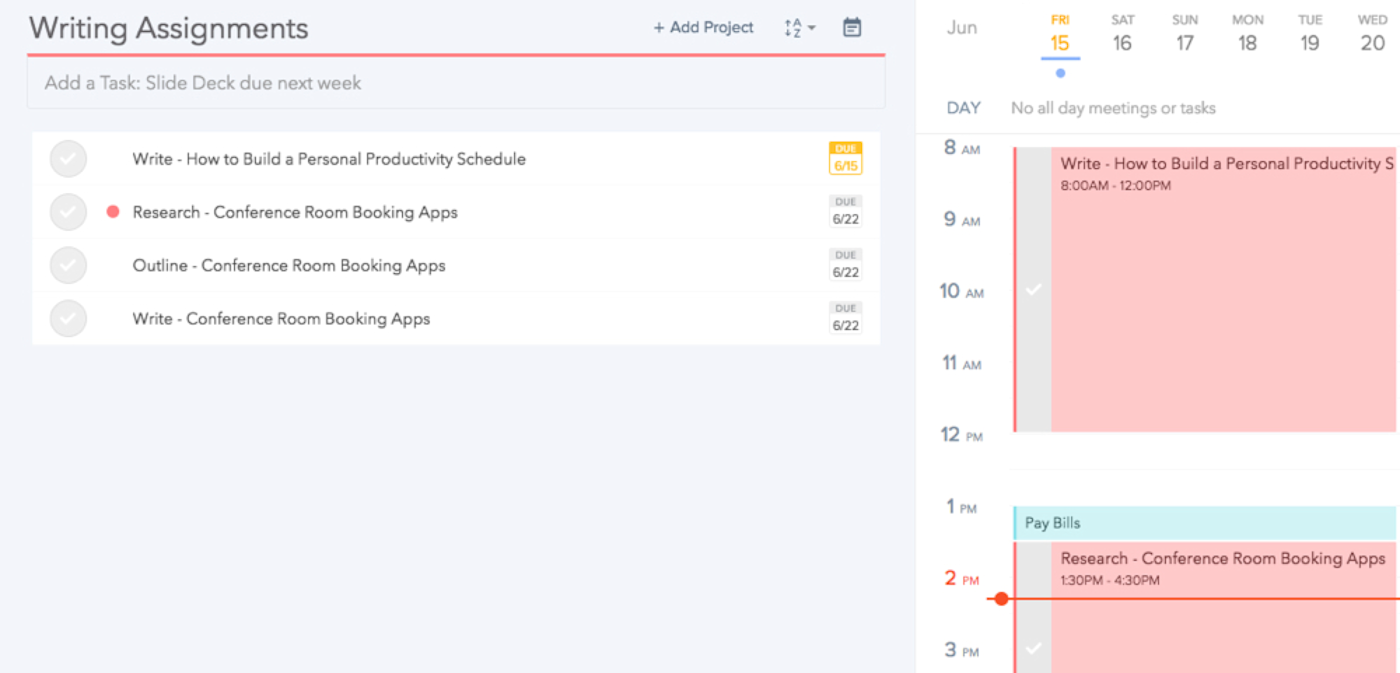
Pricing: Free for up to two users with the Individual plan.
Alternatively, you can use a Zap to automatically create calendar events from your preferred to-do app.
If you use Google Calendar, try these Zaps:
Create Google Calendar events from new Trello cards
Create Google Calendar events from new MeisterTask tasks with due dates
Create Google Calendar events from new Asana tasks
If you use Outlook, try these Zaps:
Create Office 365 events for new tasks on Week Plan
Or create a custom workflow using any of thousands of apps.
What If Your Schedule Isn't Flexible?
Ideally, you'll always be able to schedule your tasks according to your chronotype. But what happens if you can't? What if you're a night owl forced to work first shift, or if you have no choice but to work on an analytical task all day to hit a deadline?
You don't have to resign yourself to less-than-optimal productivity. There's a way to improve your productivity and focus, even during your trough: take a break. When we take breaks from our work, it's an automatic refresher. It's not as good as a full night's sleep, but it can pull you out of your slump and help you refocus for short periods of time.
There are lots of ways to take better breaks. Leave your desk for lunch. Go outside and breathe fresh air for five minutes every hour. Do some jumping jacks or pushups. Talk to a friend.
But here's the really important thing: breaks cannot just be an extension of work.
If you go to lunch with a coworker and talk shop the whole time, you're not really taking a break because you're not giving your mind time to relax. If you're checking email on your phone while sitting outside in the sunshine, you're not taking a break. As far as your mind is concerned, you're still working.
If you can't slot creative work into the hours when you're slogging through your trough, find time to take breaks. You might even benefit from a quick nap; just keep it under 20 minutes.
It may seem counter-productive, but the boost in focus that a break provides will help you accomplish a lot more than if you just try to power through the lowest point of your day.
If you want to learn more about how timing affects nearly every aspect of your life, check out When for yourself. What we've covered here is just a drop in an ocean of massively helpful information that Pink provides in his book. Use it to create a roadmap for improving your productivity and making better decisions in every aspect of your personal and professional life.
Pricing: When: The Scientific Secrets of Perfect Timing is available on Amazon for as low as $14.99 on Kindle, $17.42 in hardcover, or $20.40 in paperback.
Read more:
Title photo by jarmoluk via Pixabay. "Clocks" by jarmoluk via Pixabay. "Peak, Trough, and Rebound" and "Chronotype Identification" charts from When: The Scientific Secrets of Perfect Timing.

